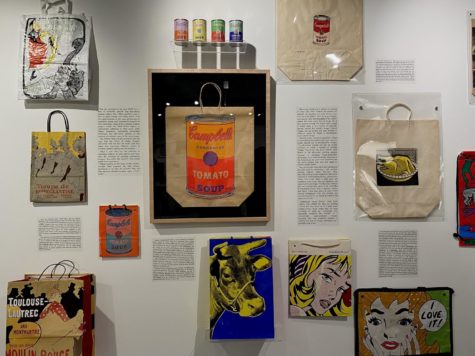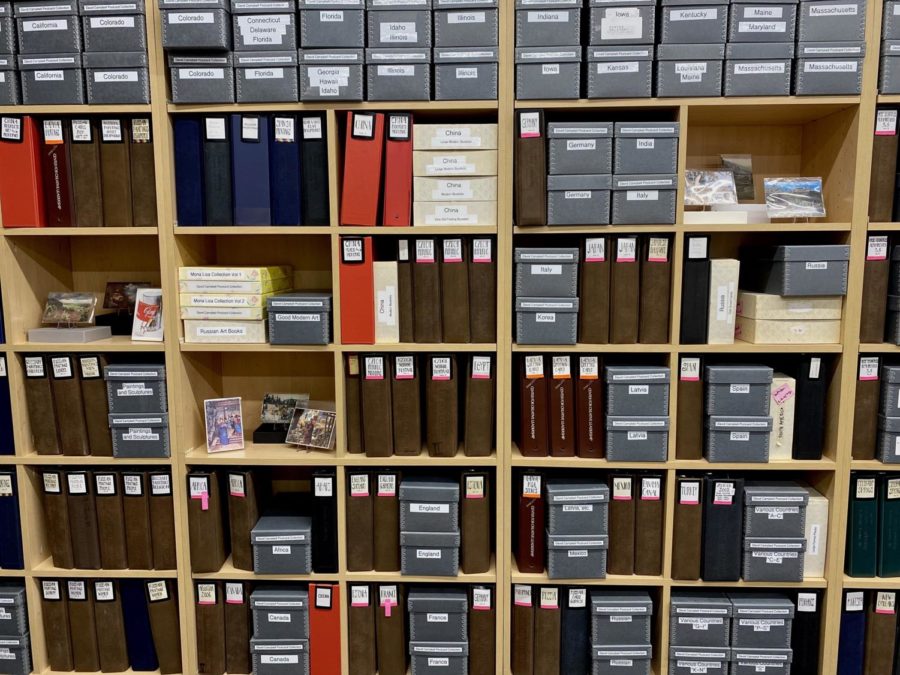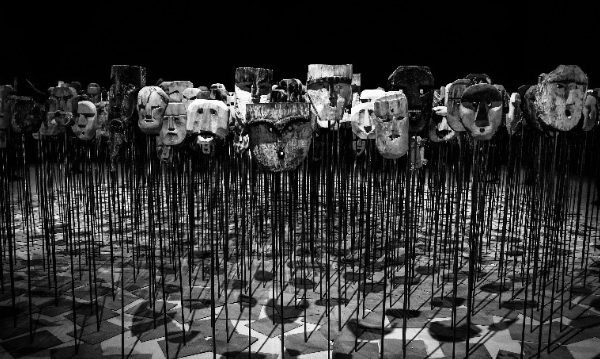Purpose and Promise: Students in Museums and Archives Certificate Program Persevere During COVID-19 and See their Work on Display
The students helped design Cultural Carry-On: America’s Literal Baggage, an exhibit of American culture, which will run through May 2022 in the Drs. Nicholas and Dorothy Cummings Center for the History of Psychology at The University Akron.
Image from the Cummings Center
December 13, 2021
Director Dr. Jodi Kearns received a particular collection of bags from a family summer of 2019. This collection would give students a wonderful opportunity to learn more about cataloging items in museums and archives and handling museum pieces. The students in the Museums and Archives certificate program took on the project and worked steadily on the exhibition.
While this plan was in store for students, no one could foretell the global pandemic that hit in March 2020. To carry out this promise for the family donors and give the same learning opportunities to students, Dr. Kearns, students, and staff needed to employ a safe and creative approach.

The University of Akron’s Cummings Center provides access to uncover human experience through art, collections, documents, media and more. Within the Center’s Institute for Human Science and Culture (IHSC) division is the Cultural Carry On: America’s Literal Baggage exhibit. This piece highlights one offspring of culture: bags.
Designed by University of Akron undergraduate students in the Museums and Archives program, this exhibit is not only a display of an extensive personal collection from Lee L. Forman but also a monument of devotion during difficulty for the students and staff involved in its construction.
Now a recent graduate in psychology, Christopher Ha vividly remembers the time when he received the email that campus was closing. His final class before the closure was the course for the Museums and Archives certificate. Ha related how the sudden closure left students feeling insecure and stressed.
“Unfortunately, COVID hit the semester we were supposed to install [the exhibit] so the whole plan of physically installing it went to the wayside and we picked up a virtual kind,” History major graduate Kristie Zachar recalls.
Zachar, already a student assistant in the Cummings Center, was taking on this project to serve as her capstone piece for the Museums and Archives Certificate.
According to Ha, this new approach involved students plotting out the collective design of the exhibit (such as lighting and display cases) as well as the specific pieces of their chosen theme.
Ha was also working on the Cultural Carry- On: America’s Literal Baggage project as a part of the Museums and Archives Certificate which complemented his interest in the fine arts.
With Lee L. Foreman’s collection spanning over 12,000 bags, there was no doubt that students could each find something that resonated with them.
“I wasn’t getting particularly jazzed about it until I started seeing what was in the collection,” Zachar said, “Okay, there is so much more in this than shopping bags.” Zachar also elaborates how bags are often a small part of our daily lives, and how they speak volumes about our culture through the ads represented on them.
Lee L. Forman, a graphic designer, started her collection with Bloomingdale’s limited-edition shopping bags. However, the collection extended vastly to other bag-like items as well.
While sifting through the collections, Zachar found items that fit her interest in pop culture and 21st century history.
“One of the bags that first caught my attention when they talked about the collection-they had a record sleeve that was signed by all four Beatles. I was like woah, they have what? I picked [the record sleeve] and a cheeseburger bag signed by Elvis.”
Ha selected items from the Lee L. Forman collection that fit a musical theme.
“My topic initially started off as music, then evolved into the history of recorded music — going back to wax rolls and early phonograph records to modern day CD streaming,” Ha says.
Unfortunately, not all students who were involved in creating the digital planning for the exhibit had the opportunity to see it come together physically in the Cummings Center.

Zachar also put in several hours in person for the project amid COVID-19. She expressed how challenging it was working alone.
“It was difficult working with a mask on during COVID with this big exhibition space — alone in the stacks, but history is my big interest. So, a lot of the stuff I was finding was something that tapped into my interest.”
Zachar worked on the project during the fall semester and some of the spring. Kearns explained that Zachar worked closely with the curator, Fan Ugalde, for the installation. Finally, the decisive moment had come, and the project was completely installed in the physical exhibition space and ready for the public on July 16, 2021.
“Not only as the Director, but as a teacher, it was a relief to see all the hard work that students do being put on and into a public space for people to enjoy. Not just for the students, but for our promise to the donor. That was really special to finally see it be installed,” Kearns said.
Kearns also explains how the installation also brought back students from the class and those who worked on the collection outside of the class to see their work completed.
Zachar and Kristie were among the students who returned as the Forman family traveled from the Washington D.C. area to see the results of the students’ hard work at the official opening.
The Cultural Carry-On: America’s Literal Baggage is currently housed in the Cummings Center until May 2022. If students or staff have further questions about how they can get involved in the Cummings Center and its upcoming projects, contact Director Dr. Jodi Kearns at [email protected].













